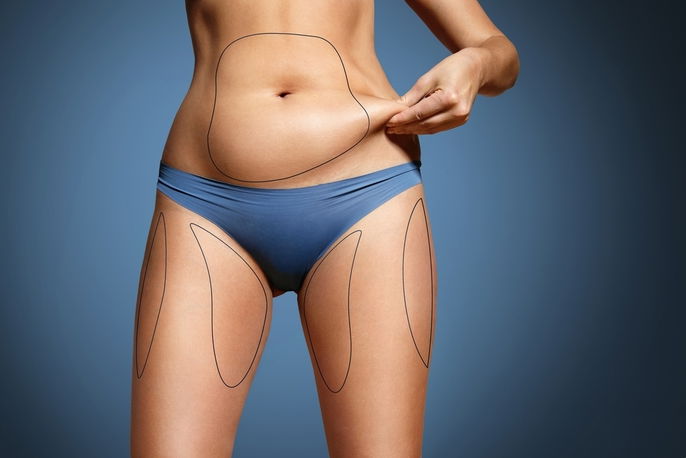What is it:
The term skinny fat is used to describe people who are not overweight, but have a high body fat percentage with a low body muscle percentage. This body composition can make you more prone to developing health conditions like high cholesterol, diabetes and fatty liver.
It is important for those who fit into the skinny fat description to adopt healthy lifestyle habits to decrease their body fat percentage and increase their muscle mass. You should engage in regular physical activity and maintain a healthy and balanced diet that is rich in protein and good fats.

How it happens
A healthy body fat percentage is usually dependent on your height and weight, however some people may gain weight from diet, decreased activity, genetic factors or a combination of these. Check out how to calculate body fat percentage and how to maintain an ideal weight.
Genetics and DNA mutations can play a role in how the body stores fat, which can lead to weight gain. However, genetics are heavily influenced by our lifestyle habits, like whether you exercise regular and if you maintain a healthy diet. A diet that is high in sugar, carbs and fat can lead to fat storage in the body, and is also associated with the development of certain conditions that make muscle gains more difficult.
Lack of physical activity can also lead to fat accumulation. A sedentary lifestyle can slow down metabolism and fat burning, as the body does not require additional energy. Being sedentary can also make it hard to gain muscle, which can make your weight appear normal, even with high levels of fat.
People who present with these characteristics are advised to consult a registered dietitian. The dietitian will evaluate body composition through a bioimpedance scale or with skin fold calipers, and may recommend further blood tests to check things like cholesterol levels and vitamin or mineral levels.
How to decrease body fat
To decrease body fat and increase muscle mass without affecting overall weight, you are advised to consume less carbohydrates and more protein and healthy fats. These foods can stimulate fat burning and help with muscle bulking. Read more about the exercises that target belly fat.
Foods that contain healthy fats include chestnuts, peanuts, seeds, avocado, coconut and olive oil. They are best consumed with carbohydrates or protein as snacks in combinations like fruit + chestnuts, bread + peanut butter, avocado smoothie + yogurt, or yogurt + chia seeds. Learn more about how mow many calories you need to achieve weight loss.
Regular physical activity is also essential for fat loss and muscle gains.
How to increase muscle mass
To gain muscle, you should exercise on a daily basis. Workouts should be made up of aerobic activities with strength training, like weight-lifting and crossfit, as these types of workouts stimulate muscle hypertrophy.
You should ensure you are including food that is rich in protein and healthy fats in all meals and snacks, so that you can stimulate muscle recovery and facilitate weight loss. Some easy tips include eating cheese and eggs for snacks, and aiming for high quantities of meat or fish for lunch or dinner. Read more about the foods that promote muscle growth.
It is also important to eat plenty of fruits and vegetables to promote overall body functioning, as these foods provide the body with vitamins and minerals that lead to muscle growth.
Check-out tips from out personal trainer about how to gain more muscle.
Sample diet plan for skinny fat body types
The following table outlines a 3-day diet plan that promotes fat loss and muscle gains:
It is important to remember that a registered dietitian can provide you with the right quantities and foods to achieve your health goals.






























